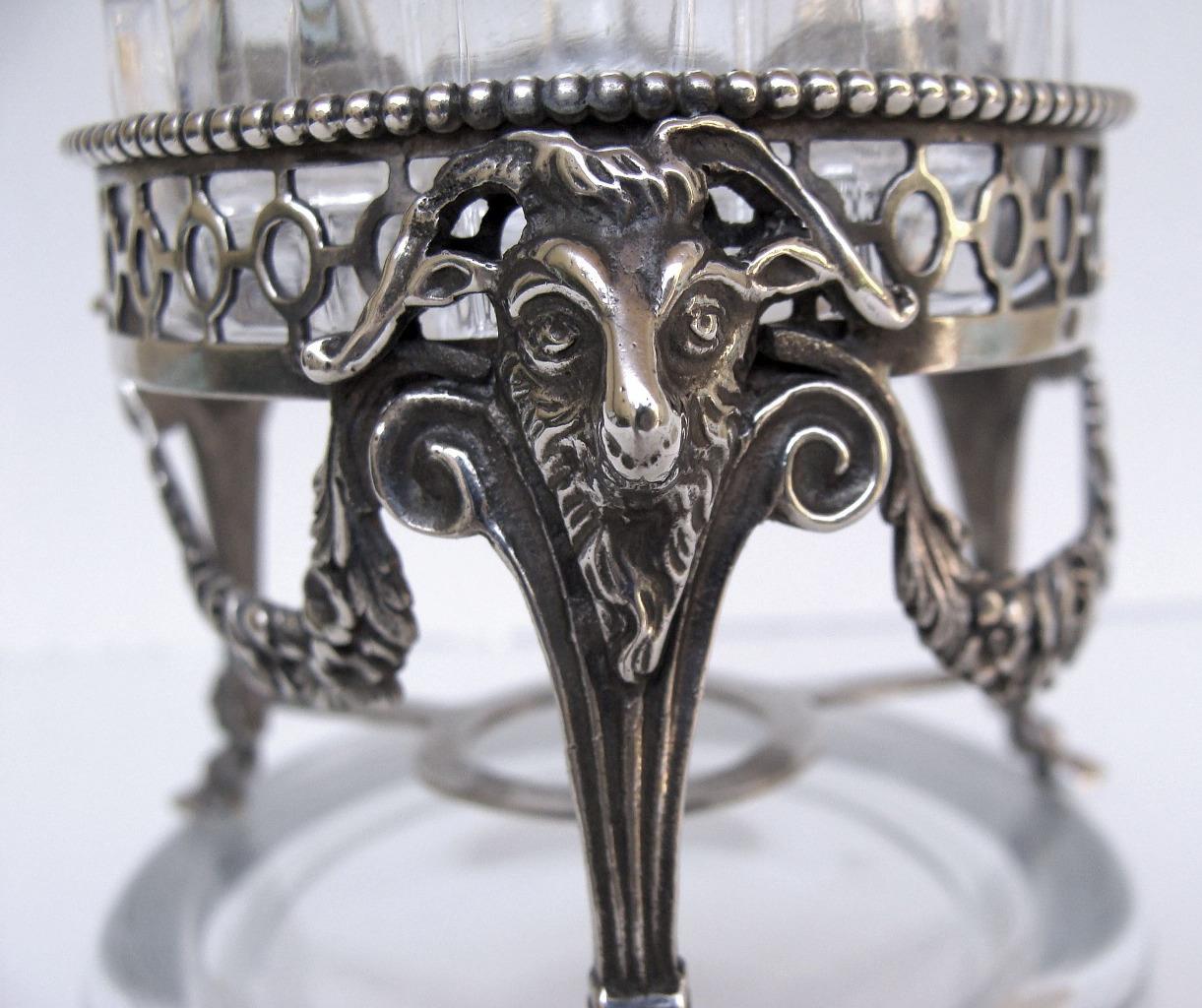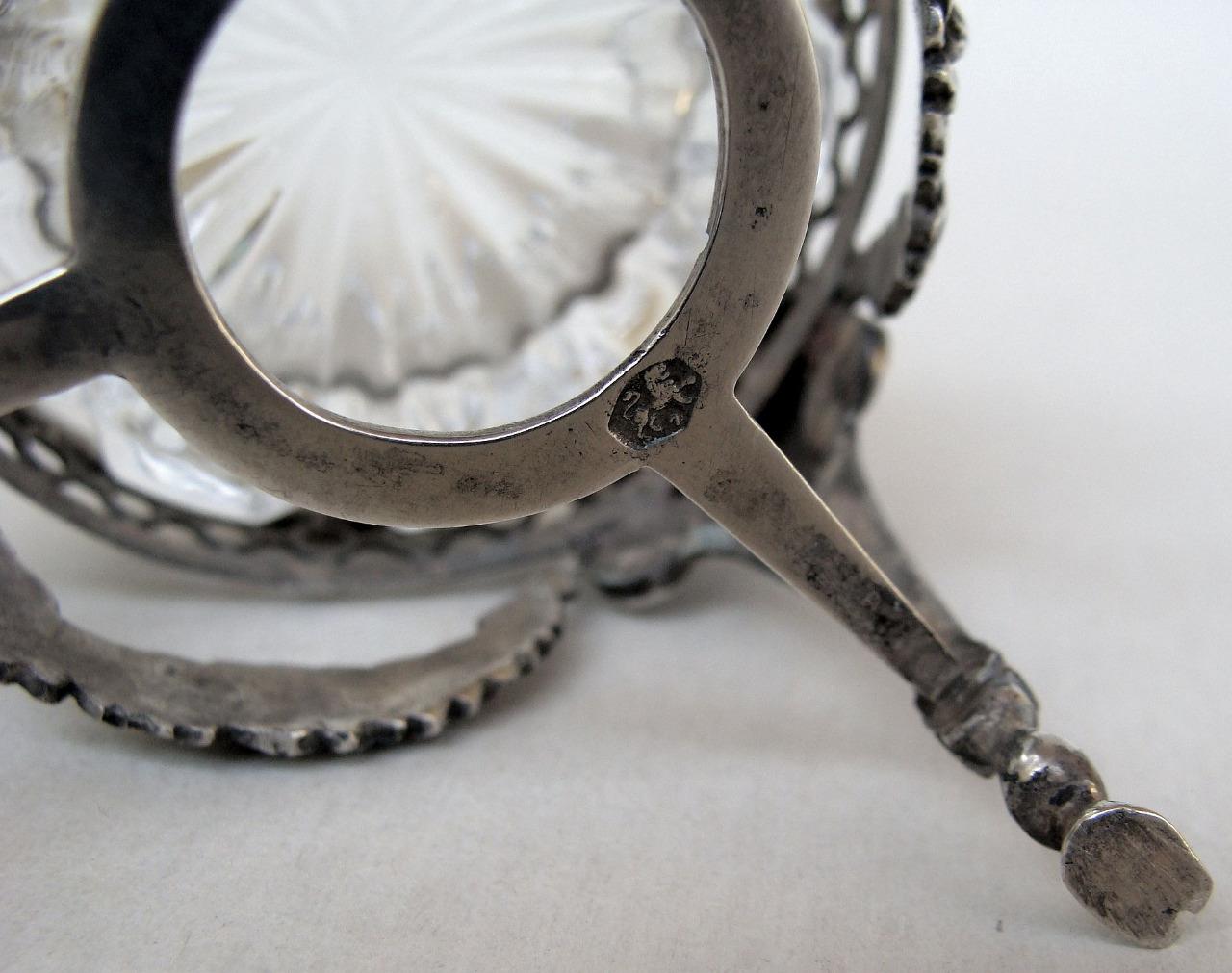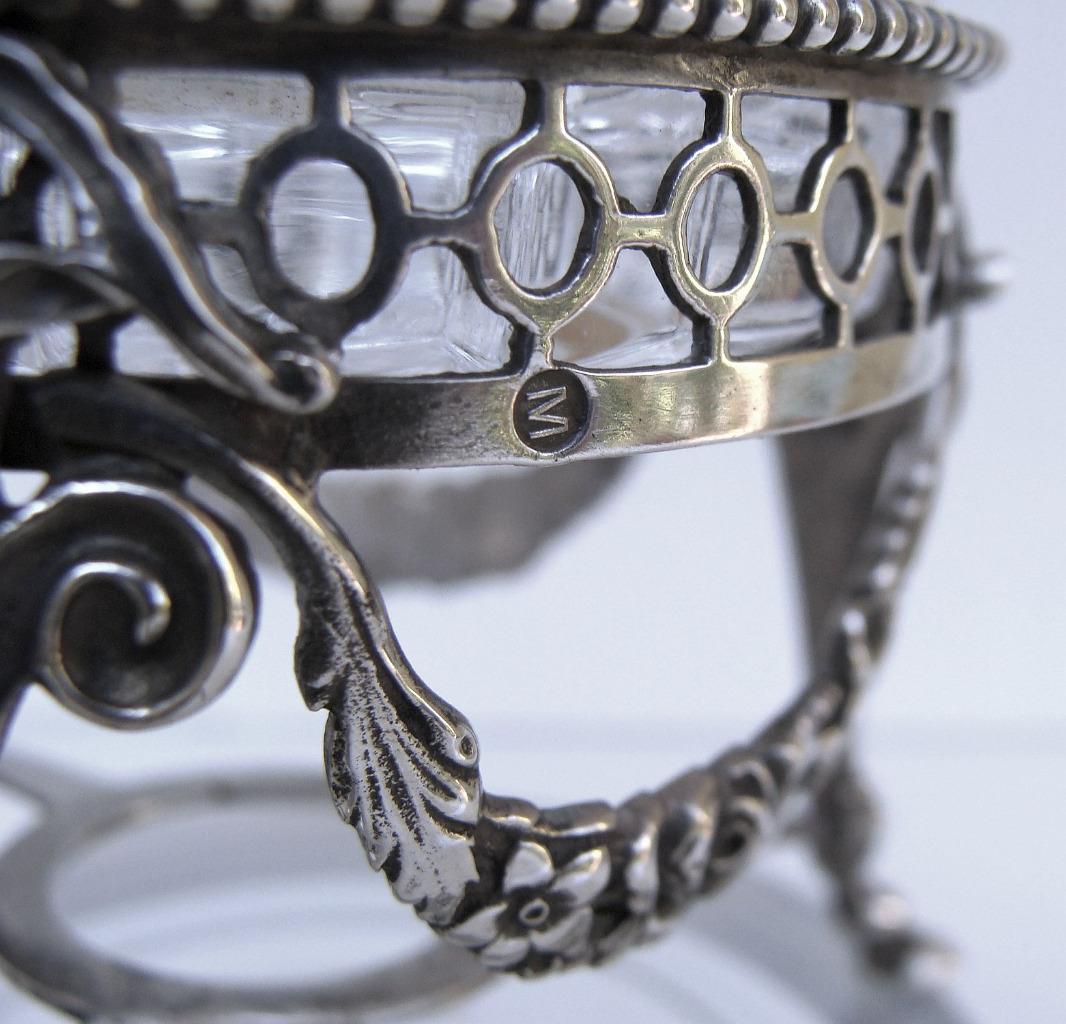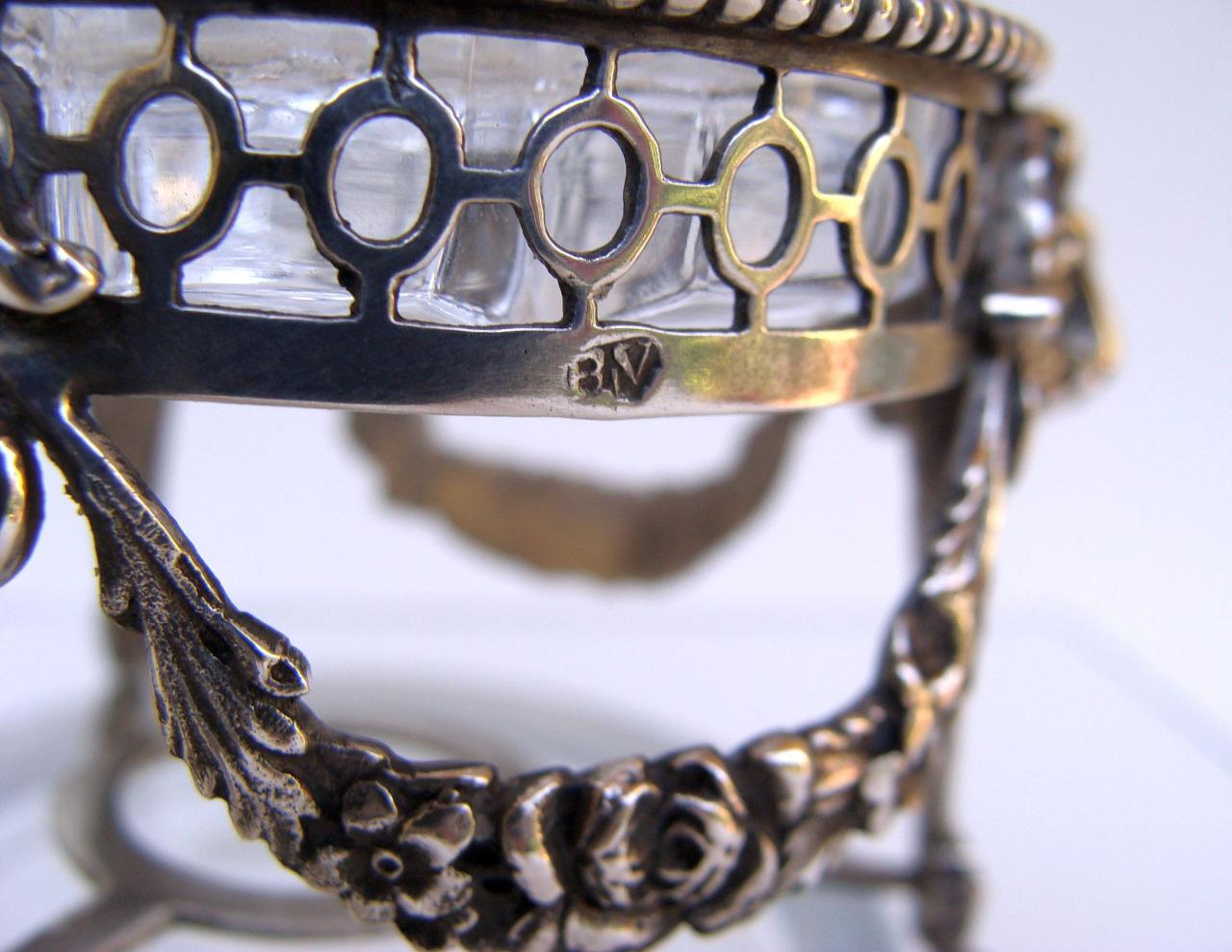Let's unlock these Dutch hallmarks on a silver open salt cellar.
Lion passant above 2 Dutch 2nd silver standard 833/1000, used 1814-1953.
Year letter M for 1922.
Maker's mark
B1V for Fa. (Firm) M. Bijkamp & Co, registered in the city of Steenwijk, 1903-1975
H.R. Bijkamp & Co
Fa. Bijkamp & Co.
Bijkamp's silversmith shop had been located in the Markt 2 building in Steenwijk since 1835. On February 14 of that year, Meine Bijkamp registered with the Waarborgkantoor in Zwolle as a gold and silversmith. Until that time he had worked as a servant for his cousin Gerard Archibald Stuart, also a silversmith in Steenwijk. When Meine Bijkamp died in 1898, at the age of eighty-nine, the company was continued by his son Jan Meine Bijkamp, who died childless in 1903. Two sons of his sister Jentje Bijkamp from her marriage to Haije Visser continued the company. under the name Fa. M. Bijkamp. In 1909 Meinard left the company. Jan Hendrik Willem Visser (1880 - 1950) subsequently saw the opportunity to expand the company, which was already profitable before then. In 1920, Visser again entered into a partnership for the factory/workshop located on Weemstraat: this time with his brother-in-law Hendrik Roelof Bijkamp. The company was given the name Fa. Bijkamp & Co.
The store on the Markt was closed in 1957. However, the factory on Weemstraat continued to produce until 1974. Countless objects such as baskets, ashtrays, letter openers, sugar tongs, purse and bag brackets as well as an incredibly large amount of scoops such as teaspoons and cake forks have left the workshop.
https://www.stadsmuseumsteenwijk.nl/con ... _parent=13
https://www.lakenhal.nl/en/search/colle ... ge=0&q=%2A
Peter.
Source;
Waarborgholland, ˜Netherlands' Responsibility Marks since 1797






